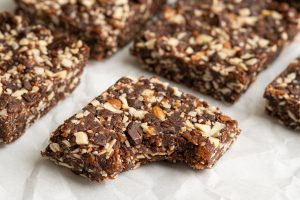
White Wine on the Skyline
The universe of wine is an embroidery woven with different flavors, varieties, and fragrances, each mirroring the remarkable excursion from plant to bottle. Vital to this account are the unmistakable creation strategies utilized in making white and red wines. In this article, we leave on an excursion through grape plantations and basements, investigating the central distinctions in how white wine and red wine are made, from grape choice to maturation and maturing. The white wine hong kong have access to a diverse selection of varietals from around the world.
Grape Choice and Reap:
The winemaking system starts in the grape plantation, where cautious thought is given to grape choice and readiness. For white wine creation, winemakers frequently focus on grapes with high acridity and inconspicuous flavors, like Chardonnay, Sauvignon Blanc, and Riesling. These grapes are normally gathered before in the season to hold their regular causticity and keep away from exorbitant sugar collection. Conversely, red wine grapes, like Cabernet Sauvignon, Merlot, and Pinot Noir, are left to completely mature on the plant, creating rich tones, tannins, and complex flavors before reap.
Smashing and Squeezing:
When reaped, the grapes go through pulverizing and squeezing to separate their juice. For white wine, the grapes are promptly squeezed, isolating the juice from the skins, seeds, and stems. This cycle limits contact with the grape solids, bringing about a reasonable, pale-hued juice ideal for white wine creation. Conversely, red wine grapes are normally destemmed and squashed before aging, permitting the juice to stay in touch with the grape skins during maturation, bestowing variety, tannins, and flavor to the last wine.

Fermentation:
Aging is the groundbreaking stage where grape juice is changed over into wine, because of the activity of yeast polishing off sugars and creating liquor and carbon dioxide. For white wine, maturation frequently happens in treated steel tanks or nonpartisan oak barrels at cool temperatures to save the wine’s sensitive smells and flavors. This sluggish aging cycle guarantees the maintenance of new organic product attributes and fresh corrosiveness. Red wine, then again, goes through maturation with the grape skins, removing variety, tannins, and flavor compounds. This cycle, known as maceration, can endure anyplace from a couple of days to a little while, contingent upon the ideal style and force of the wine.
Maturing and Development:
A few white wines, especially those produced using assortments like Chardonnay, may go through malolactic maturation, an optional maturation that relax causticity and adds richness to the surface. Conversely, red wines regularly go through longer times of maturing in oak barrels, permitting them to mellow and coordinate tannins while creating nuanced fragrances and flavors. Also, a few red wines benefit from bottle maturing, further improving their intricacy and maturing potential.
While white wine and red wine share normal components in their winemaking cycle, for example, grape determination and maturation, it is the unobtrusive subtleties in procedures like squashing, squeezing, and maturing that recognize their separate styles and qualities. Discovering the perfect white wine hong kong is made easy with numerous wine shops and online retailers offering a wide range of options to suit every palate.







